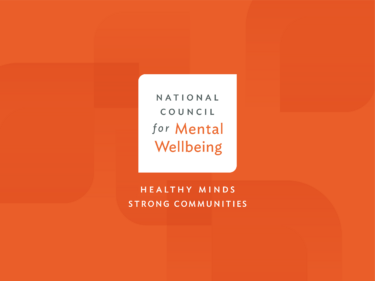Mark Twain had a funny retort about quitting smoking: “Giving up smoking is easy. I’ve done it hundreds of times.”
In other words, change is hard.
As we observe Recovery Month throughout September, it’s important to acknowledge how common substance use disorders have become. The release on July 30 of the 2023 National Survey on Drug Use and Health (NSDUH) provided a glimpse. According to the report:
70.5 million
people (24.9%) used illicit drugs in the past year, compared with 70.3 million people in 2022 and 61.2 million in 2021.
134.7 million
people (47.5%) used alcohol in the past year, and 61.4 million of them (45.6%) engaged in binge drinking.
48.5 million
people (17.1%) had a substance use disorder in the past year, compared with 48.7 million people in 2022 and 46.3 million in 2021.
Among this group, 28.9 million people (10.2%) had an alcohol use disorder in 2023, compared to 29.5 million in 2022.
And while substance use disorders are common, treatment is not: Among the 48.5 million people who had a substance use disorder in the past year, 41.4 million people (85.4%) did not receive treatment.
One challenge is helping people get the treatment they want and need, and it’s important to recognize that treatment will look different for everyone.
We used to say that someone seeking substance use treatment could take any path to recovery, as long as that path led to abstinence. But we’ve learned there are multiple pathways to recovery, so now we say that someone seeking substance use treatment can take any path to recovery as long as it leads to meaningful change. And “meaningful change” must be defined by the individual.
Increasingly, it is understood that pathways to recovery may not lead to abstinence in the traditional sense. They may include hybrid approaches such as abstaining from some substances and moderation for others. While abstinence-only approaches are still largely considered “safest,” success in more moderation-based approaches may depend on the severity and chronicity of the person’s substance use disorder.
The Substance Abuse and Mental Health Services Administration’s working definition of recovery doesn’t include the word “abstinence.”
We also know, thanks to the Recovery Research Institute, that many people don’t seek a formal treatment program, and the lines between clinical and nonclinical approaches are blurring with the advent of telehealth, health apps and AI-assisted technologies.
Here’s one: Integrating treatment for substance use with primary care is gaining momentum. An increasing number of primary care doctors are prescribing medications for alcohol and other substance use disorders, although the need still vastly outweighs the availability of such treatments. Better integration and care coordination are tied to better outcomes and can reduce relapse or recurrence.
If we move away from an exclusive focus on abstinence, we can expand prevention, treatment and recovery supports in nontraditional ways. That could significantly reduce the rising number of overdose deaths.
By embracing and integrating a broader range of approaches, including harm reduction strategies, we can provide lifesaving services and early intervention supports. Fentanyl test strips successfully detect the presence of illicit fentanyl, which has become increasingly prominent. Synthetic opioids, primarily fentanyl, remain the most lethal problem we face in the overdose crisis; fentanyl can be 50 to 100 times more powerful than morphine, according to the National Institute on Drug Abuse.
Making the overdose-reversal drug naloxone more widely available already has helped reduce overdose deaths, and we should continue efforts to make it easy for everyone to obtain that lifesaving drug.
We can make significant progress in helping people with substance use disorders by building compassionate, integrated systems of whole-person care that meet people where they are. These culturally responsive systems should offer a range of treatment and harm reduction options, creating multiple pathways toward a more broadly defined sense of recovery.
Recovery takes many forms, so we must empower people to find their own way. Let’s do all we can to help them. Please share your reflections on this important topic, and check out our National Recovery Month resources.
And don’t forget about our upcoming webinar, Mental Health Barriers in the Workplace – Navigating and Supporting Employee Wellbeing, on Tuesday, Oct. 1. Panelists from Kate Spade New York, Kaiser Permanente and Lendlease Foundation will discuss strategies to identify mental health barriers in the workplace, how to create a supportive culture that reduces stigma and share insights into essential mental health training programs ahead of World Mental Health Day on Oct. 10.




